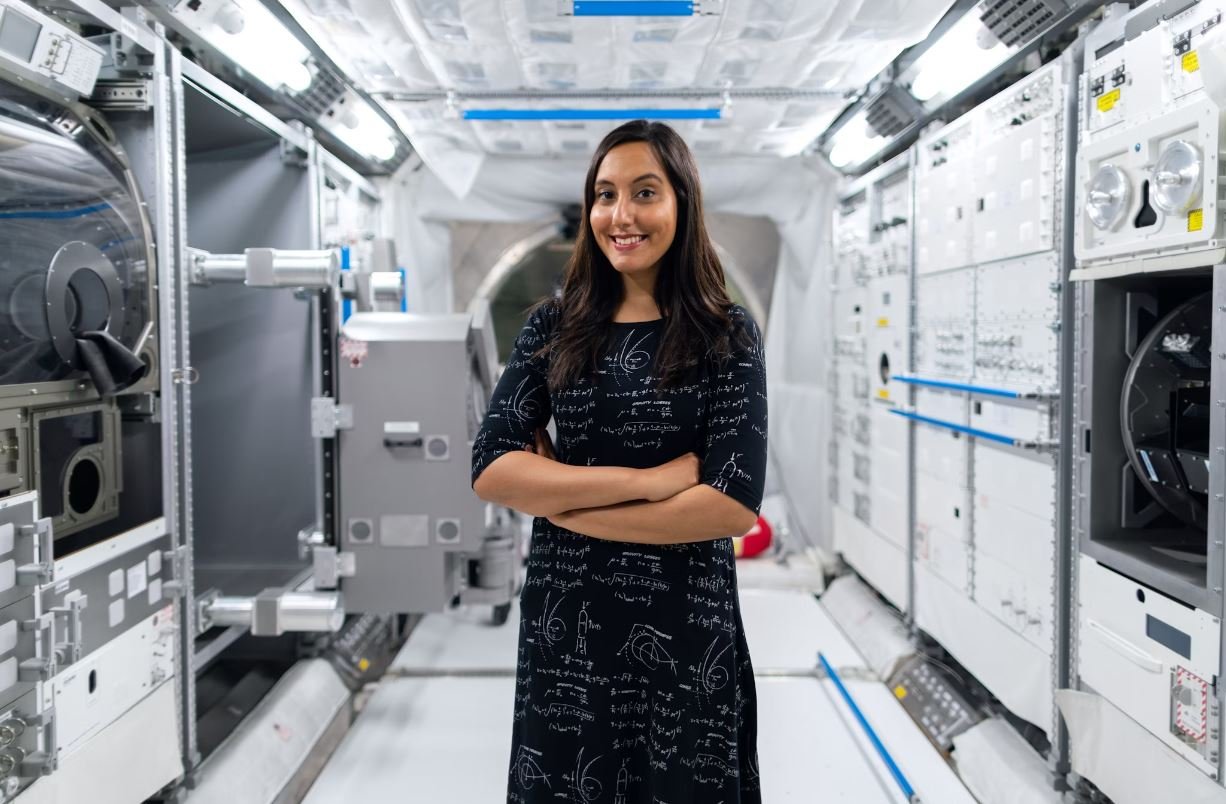OpenAI: What Is It?
OpenAI is an artificial intelligence research lab that aims to ensure that artificial general intelligence (AGI) benefits all of humanity. AGI refers to highly autonomous systems that outperform humans at most economically valuable work. OpenAI focuses on long-term safety and aims to directly build safe and beneficial AGI or help others achieve this outcome.
Key Takeaways
- OpenAI is an AI research lab striving for AGI that benefits humanity.
- AGI is autonomous systems surpassing human capabilities in valuable work.
- OpenAI prioritizes safety in AGI development and advocates for its adoption.
OpenAI’s mission is to ensure that artificial general intelligence benefits all humans. They are dedicated to conducting the necessary research to make AGI safe and driving its broad adoption across the AI community.
OpenAI actively seeks to cooperate with other research and policy institutions to create a global community working together to address AGI’s global challenges. They aim to provide public goods such as publishing most of their AI research, sharing safety, policy, and standards research to help society navigate the path to AGI.
*OpenAI’s commitment to safety* is a top priority. They are concerned about AGI development becoming a competitive race without adequate time for safety precautions. To address this, if another value-aligned and safety-conscious project comes close to building AGI before OpenAI does, they commit to stop competing and start assisting that project.
OpenAI Principles
- *Broadly distributed benefits:* OpenAI commits to using AGI for the benefit of all, diligently avoiding uses that harm humanity or concentrate power.
- *Long-term safety:* OpenAI is dedicated to conducting research to make AGI safe and promoting the adoption of safety practices across the AI community.
- *Technical leadership:* OpenAI aims to be at the forefront of AI capabilities to effectively address AGI’s impact on society.
- *Cooperative orientation:* OpenAI actively cooperates with other institutions and seeks to create a global community working together to address AGI’s challenges.
Data Points: OpenAI Facts
| Year Founded | Headquarters | Founders |
|---|---|---|
| 2015 | San Francisco, CA | Elon Musk, Sam Altman, Ilya Sutskever, Greg Brockman, Wojciech Zaremba |
OpenAI gained significant attention in 2018 when they released GPT-2, a language model capable of generating coherent and contextually relevant text. The AI community heralded it as a groundbreaking development, although there were concerns about the potential misuse of such powerful language generation technology.
Over the years, OpenAI has established partnerships with both academic institutions and industry leaders to advance AI research and ensure responsible development. They actively publish research papers and technical reports to foster transparency and knowledge sharing in the AI community.
The Future of OpenAI
OpenAI’s commitment to safety and cooperation sets a precedent for responsible AGI development to avoid harmful outcomes. As they continue to advance AI capabilities and research, OpenAI aims to create a global framework for addressing AGI’s societal challenges and making AGI an asset for humanity.

Common Misconceptions
Misconception 1: OpenAI is a Robot Company
One common misconception about OpenAI is that it is a company focused on building robots. While OpenAI does work on artificial intelligence (AI) technologies, their primary focus is on developing AI models and algorithms, rather than physical robotic systems. OpenAI aims to advance AI research and ensure that its benefits are accessible to all of humanity.
- OpenAI focuses on AI models and algorithms, not physical robots.
- Their goal is to advance AI research and democratize its benefits.
- OpenAI aims to make AI safe, ethical, and useful.
Misconception 2: OpenAI Wants to Replace Human Jobs
Another misconception is that OpenAI’s goal is to replace human jobs with AI. While AI advancements may have an impact on certain job sectors, OpenAI’s primary objective is to augment human capabilities and assist in tasks, rather than replace human workers entirely. OpenAI emphasizes the importance of human-AI collaboration and works towards creating AI systems that are beneficial and useful for individuals and society.
- OpenAI’s goal is to augment human capabilities, not replace jobs.
- They aim for collaboration between humans and AI.
- The focus is on creating AI systems that are beneficial to individuals and society.
Misconception 3: OpenAI is Only for Researchers and Developers
Many people have the misconception that OpenAI is solely for researchers and developers in the field of AI. However, OpenAI aims to reach a broader audience and make its technology accessible to all. They provide tools and models that enable developers and researchers from various industries to utilize and benefit from AI technologies, even without extensive expertise in the field.
- OpenAI’s technology aims to be accessible to a wider audience.
- They provide tools and models for developers and researchers from different industries.
- OpenAI enables utilization of AI technologies without extensive expertise in the field.
Misconception 4: OpenAI’s Technology is Fully Autonomous
Some people may assume that OpenAI’s technology is fully autonomous and capable of independently making decisions. However, OpenAI’s AI systems require human guidance and supervision. While they are designed to perform tasks with minimal human intervention, humans are critical in training and overseeing the AI models to ensure they behave ethically, align with human values, and avoid potential biases.
- OpenAI’s AI systems require human guidance and supervision.
- Humans are involved in training and overseeing the AI models.
- Ensuring ethical behavior and avoiding biases are crucial aspects for OpenAI.
Misconception 5: OpenAI Has No Concern for Ethical AI
Another misconception surrounding OpenAI is the belief that they do not prioritize ethical considerations in their AI systems. However, OpenAI places great importance on developing AI that is safe, transparent, and aligned with human values. They actively work on research and engineering to mitigate potential risks and ensure the responsible deployment of AI technology.
- OpenAI prioritizes ethical considerations in their AI systems.
- They focus on developing safe, transparent, and value-aligned AI.
- OpenAI actively works to mitigate potential risks and responsibly deploy AI technology.

What is OpenAI?
OpenAI is a research organization and company that focuses on developing and promoting friendly AI that benefits all of humanity. They aim to ensure that artificial general intelligence (AGI) benefits everyone and does not harm or concentrate power in the hands of a few. OpenAI has made significant advancements in the field of machine learning and has implemented various projects and efforts to make AI technologies accessible to all.
Table: AI in Popular Culture
In this table, we explore the presence of AI in popular culture, showcasing some iconic examples of AI in movies, TV shows, and literature.
| Media | AI Character/Concept |
|---|---|
| The Matrix | The sentient AI system known as the Matrix |
| Blade Runner | Replicants – bioengineered AI |
| 2001: A Space Odyssey | HAL 9000 – a sentient AI computer |
| Ex Machina | Ava – a human-like AI robot |
| Westworld | Hosts – AI robots in a Wild West theme park |
Table: Notable Achievements by OpenAI
This table showcases some of the significant accomplishments and breakthroughs achieved by OpenAI over the years.
| Year | Development |
|---|---|
| 2012 | OpenAI publishes the first AI model that can learn to play video games through reinforcement learning. |
| 2014 | OpenAI develops the “Generative Adversarial Networks” (GANs) framework, allowing machines to generate highly realistic images and data. |
| 2016 | OpenAI introduces “OpenAI Gym,” a toolkit for developing and comparing reinforcement learning algorithms. |
| 2018 | OpenAI publishes “GPT-2,” a cutting-edge language generation model capable of producing human-like text. |
| 2020 | OpenAI releases the beta version of “GPT-3,” a highly advanced language model with 175 billion parameters. |
Table: Impact of OpenAI’s Research
This table demonstrates some of the real-world applications and impacts of OpenAI’s research and efforts in various domains.
| Domain/Industry | Impact |
|---|---|
| Healthcare | AI-assisted diagnostics and personalized treatment plans |
| Finance | Enhanced fraud detection and automated trading systems |
| Transportation | Improved autonomous vehicle control and traffic optimization |
| Customer Service | AI chatbots for efficient customer support and query resolution |
| Education | Personalized learning experiences and intelligent tutoring systems |
Table: OpenAI’s Vision for the Future
In this table, we delve into OpenAI’s vision for the future, highlighting their goals and aspirations in the field of AI.
| Area of Focus | Objective |
|---|---|
| AI Safety | Ensuring AI systems are safe, follow human values, and have minimal risks of unintended consequences. |
| AI Ethics | Promoting ethical guidelines and responsible use of AI technologies. |
| AI Accessibility | Making AI tools and resources widely available and affordable. |
| AI Collaboration | Encouraging global cooperation and collaboration in AI research and development. |
| AI Governance | Advocating for transparent and inclusive decision-making processes in AI development and deployment. |
Table: Funding for OpenAI
This table breaks down the sources of funding for OpenAI, showcasing the organizations and individuals who support their endeavors.
| Funding Source | Contributions |
|---|---|
| Elon Musk | $10 million |
| Microsoft | $1 billion |
| National Science Foundation (NSF) | $20 million |
| $500,000 | |
| Individual Donations | $5 million |
Table: OpenAI’s Collaborations
This table showcases some of the prominent collaborations and partnerships that OpenAI has formed with other organizations.
| Collaborating Entity | Objective/Project |
|---|---|
| Microsoft | Joint development of large-scale AI models and infrastructure |
| Stanford University | Research collaboration on advanced natural language processing techniques |
| Google Brain | Joint research projects to advance AI technology |
| Boston Dynamics | Integration of OpenAI’s algorithms with advanced robotics systems |
| DeepMind | Collective effort towards developing safe, beneficial AI |
Table: OpenAI’s Technical Publications
This table lists some of the key technical publications published by OpenAI, highlighting their contributions to the field of AI research.
| Publication Title | Year |
|---|---|
| “Generative Pre-trained Transformers” | 2018 |
| “Improving Language Understanding with Unsupervised Learning” | 2019 |
| “Playing Atari with Deep Reinforcement Learning” | 2013 |
| “Unsupervised Representation Learning with Deep Convolutional Generative Adversarial Networks” | 2015 |
| “Human-level Control through Deep Reinforcement Learning” | 2015 |
Table: OpenAI’s Contributions to Open Source
This table highlights some of the open-source projects and initiatives released by OpenAI, fostering collaboration and knowledge sharing in the AI community.
| Project/Initiative | Description |
|---|---|
| OpenAI Gym | A toolkit for developing and benchmarking reinforcement learning algorithms |
| Spinning Up | Educational resource providing code implementations and tutorials for deep reinforcement learning |
| Transformer | An open-source library for implementing transformer-based models |
| GPT-2 OutPuts | Repository containing examples and prompts generated by GPT-2 |
| DALL-E | OpenAI’s research project on creating images from textual descriptions |
Conclusion
OpenAI has emerged as a trailblazer in the field of AI research and development. Their contributions range from cutting-edge AI technologies like GPT-3 to promoting principles of transparency, safety, and accessibility. Through collaborations, they foster innovation and encourage responsible AI practices. OpenAI’s vision for the future envisions a world where AI benefits all of humanity. With their continued efforts and advancements, OpenAI is playing a pivotal role in shaping the future of AI and ensuring its positive impact on society.
Frequently Asked Questions
OpenAI: What Is It?




